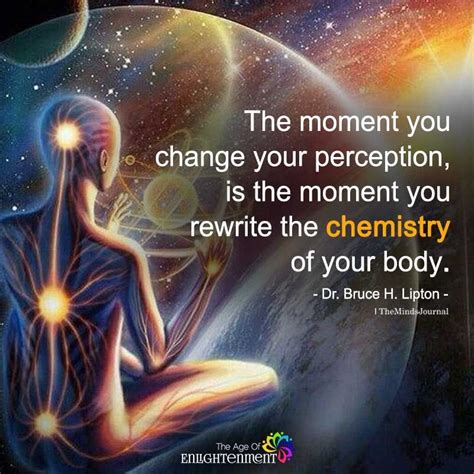How Practicing Yoga Can Transform Your Self-Perception
Yoga has long been celebrated for its physical benefits, but its potential to change how we view ourselves is equally profound. This practice, blending mindfulness, breathwork, and movement, offers a pathway to reshape not just the body, but the mind and spirit. In this article, we will explore the intricate ways in which yoga can transform self-perception, from boosting self-confidence to fostering self-acceptance, and how these changes can have a ripple effect on various aspects of life.
Introduction
Self-perception, or how we view ourselves, affects nearly every facet of our lives—relationships, career, health, and mental well-being. Yoga is more than just a fitness routine; it is a holistic practice that merges physical, mental, and spiritual growth. By improving the way we see ourselves, yoga opens doors to personal development, better decision-making, and a more fulfilling life. But how exactly does yoga influence self-perception? And why is it effective at breaking down negative beliefs we may hold about ourselves? This article takes a deep dive into these questions, offering evidence-backed answers and practical insights.
Key Concepts
Before delving into the transformative power of yoga on self-perception, it is essential to define the key concepts central to this topic.
- Self-Perception: The overall view of oneself, encompassing self-esteem, self-worth, and identity.
- Mindfulness: A state of awareness where one is present and fully engaged in the moment, without judgment.
- Breathwork: Controlled breathing exercises that help regulate emotions, reduce stress, and improve focus.
- Asana: The physical poses practiced in yoga, designed to enhance both strength and flexibility.
- Self-Compassion: Treating oneself with kindness and understanding, particularly in times of failure or challenge.
Historical Context
Yoga’s roots go back over 5,000 years, originating in ancient India. Traditionally, yoga was a spiritual discipline focused on aligning body, mind, and spirit through meditation, breath control, and asanas. Over time, it has evolved to incorporate a variety of practices, from highly physical forms like Ashtanga to more meditative versions like Yin yoga. While the primary purpose of yoga has historically been spiritual enlightenment, it also aims to nurture self-awareness, which is directly linked to self-perception. In modern times, yoga is embraced globally, not only for physical fitness but as a tool for mental and emotional well-being.
Current State Analysis
In today’s fast-paced world, self-perception issues—such as low self-esteem, negative body image, and self-doubt—are on the rise. The constant bombardment of social media, comparison, and societal pressures leaves many people feeling disconnected from themselves. Yoga, however, provides a refuge from these external pressures, inviting practitioners to look inward. Multiple studies have shown that consistent yoga practice can reduce stress, improve body satisfaction, and increase self-awareness. By focusing on the present moment and fostering a non-judgmental relationship with oneself, yoga helps individuals challenge negative self-talk and replace it with a more compassionate and accurate self-image.
Practical Applications
Here’s how incorporating yoga into your daily routine can change how you perceive yourself:
- Body Awareness: Yoga emphasizes connecting with your body and breath. By tuning into how your body feels in different poses, you develop a deeper understanding of your physical limits and strengths, promoting body positivity.
- Emotional Regulation: Through breath control and mindfulness, yoga offers a powerful tool for managing emotions, especially stress and anxiety, which often distort self-perception.
- Self-Compassion: Poses such as the Child’s Pose or Shavasana encourage relaxation and self-compassion, reminding you to be gentle with yourself.
- Confidence Boost: Mastering challenging poses like the Headstand or Crow Pose can lead to a sense of accomplishment, translating to greater confidence off the mat.
Case Studies
Consider the following case studies, which showcase the real-world impact of yoga on self-perception:
| Case Study | Before Yoga | After Yoga |
|---|---|---|
| Sarah, 34, working professional | Struggled with body image issues, low self-esteem. | Gained body confidence, became more self-compassionate through regular yoga practice. |
| John, 45, recovering from injury | Felt disconnected from his body, frustrated by physical limitations. | Developed a positive relationship with his body, appreciating what it could do despite injury. |
| Emma, 27, university student | Overwhelmed by anxiety and academic stress. | Used breathwork techniques to manage stress, gaining clarity and self-assurance. |
Stakeholder Analysis
Yoga’s impact on self-perception involves various stakeholders:
- Yoga Practitioners: Direct beneficiaries of yoga’s transformative effects on self-perception, gaining mental and emotional resilience.
- Instructors: Play a pivotal role in guiding practitioners towards self-awareness, compassion, and acceptance.
- Healthcare Providers: More psychologists and wellness professionals are incorporating yoga as part of mental health treatment plans.
Implementation Guidelines
For those looking to leverage yoga for self-perception transformation, here are some key guidelines:
- Start with mindfulness practices, such as breathwork, to ground yourself in the present.
- Incorporate a mix of challenging and restorative poses to foster self-compassion and confidence.
- Maintain consistency by practicing regularly, even if only for a few minutes each day.
- Work with a yoga instructor who understands your personal goals, particularly if your aim is to improve self-perception.
Ethical Considerations
While yoga can greatly improve self-perception, ethical considerations must be kept in mind:
- Cultural Appropriation: Practitioners should recognize and honor the cultural origins of yoga, avoiding practices that commodify or distort its true meaning.
- Body Inclusivity: Yoga instructors must ensure their teaching methods are inclusive of all body types and abilities, to avoid perpetuating negative self-image in students.
Limitations and Future Research
Despite its many benefits, there are some limitations to yoga’s effect on self-perception:
- Not everyone experiences the same level of transformation, as personal experiences and psychological factors play a significant role.
- More research is needed to quantify long-term effects on self-perception across different populations, particularly for individuals with severe mental health conditions.
Future research could explore how different styles of yoga (e.g., Vinyasa vs. Yin) impact self-perception and whether combining yoga with other therapeutic approaches enhances results.
Expert Commentary
Experts in both psychology and yoga underscore the importance of integrating mind-body practices like yoga into daily life for improving self-perception. Yoga teacher and psychologist Dr. Maria Singh notes, “Yoga teaches us to listen to our bodies, and in doing so, it helps us break down harmful beliefs we hold about ourselves.” Meanwhile, clinical psychologist Dr. James Wilson emphasizes, “Yoga’s focus on mindfulness can create lasting changes in how people view themselves, leading to improved self-esteem and overall well-being.”








